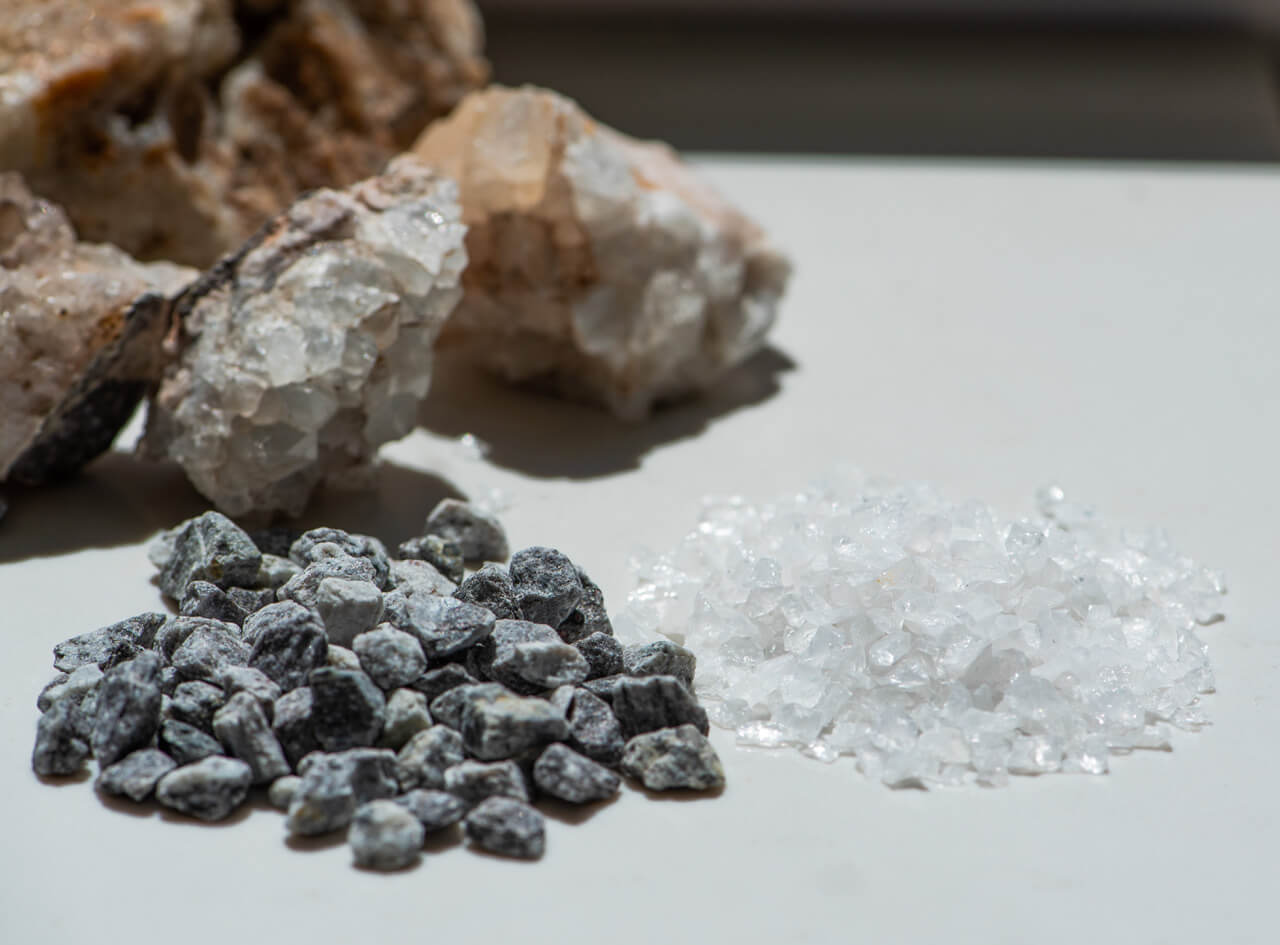There is no stone like TechniStone®
TechniStone® is engineered stone made by people for people. Its uniqueness lies in its combination of natural beauty and modern, twenty-first century technology. It is made from crushed quartz, silica sand, and granite, which make up more than 90% of the product. That way we are reducing the impact on the landscape caused by the quarrying of natural stone, which is slowly causing this part of the earth's hidden wealth to be irreversibly lost. The natural components of engineered stone are complemented by shards of mirror or glass and small amounts of pigment, enabling us to achieve unique color variations and textures that exceed nature’s capabilities. All raw materials are tightly bonded with resin, which gives TechniStone® the distinctive properties that allow the creation of sustainable homes without high maintenance or extreme cleaning requirements.
Powered by Froala Editor
Why do We Use It?
It is a long established fact that a reader will be distracted by the readable content of a page when looking at its layout. The point of using Lorem Ipsum is that it has a more-or-less normal distribution of letters, as opposed to using 'Content here, content here', making it look like readable English. Many desktop publishing packages and web page editors now use Lorem Ipsum as their default model text, and a search for 'lorem ipsum' will uncover many web sites still in their infancy. Various versions have evolved over the years, sometimes by accident, sometimes on purpose (injected humour and the like).
Powered by Froala Editor
Where does It Come From?
Contrary to popular belief, Lorem Ipsum is not simply random text. It has roots in a piece of classical Latin literature from 45 BC, making it over 2000 years old. Richard McClintock, a Latin professor at Hampden-Sydney College in Virginia, looked up one of the more obscure Latin words, consectetur, from a Lorem Ipsum passage, and going through the cites of the word in classical literature, discovered the undoubtable source. Lorem Ipsum comes from sections 1.10.32 and 1.10.33 of "de Finibus Bonorum et Malorum" (The Extremes of Good and Evil) by Cicero, written in 45 BC. This book is a treatise on the theory of ethics, very popular during the Renaissance. The first line of Lorem Ipsum, "Lorem ipsum dolor sit amet..", comes from a line in section 1.10.32.
The standard chunk of Lorem Ipsum used since the 1500s is reproduced below for those interested. Sections 1.10.32 and 1.10.33 from "de Finibus Bonorum et Malorum" by Cicero are also reproduced in their exact original form, accompanied by English versions from the 1914 translation by H. Rackha
Powered by Froala Editor
